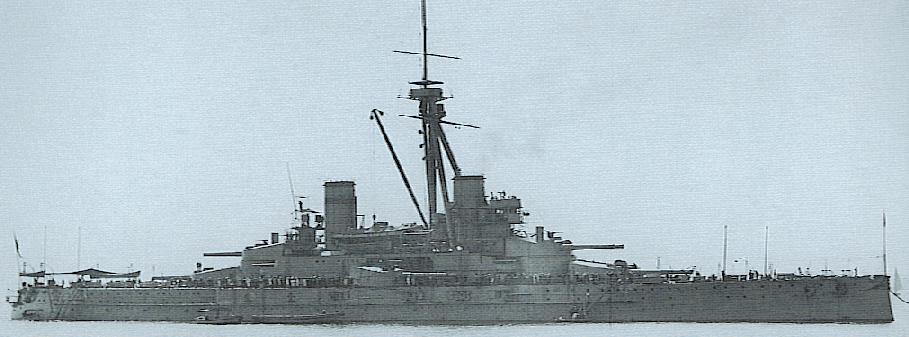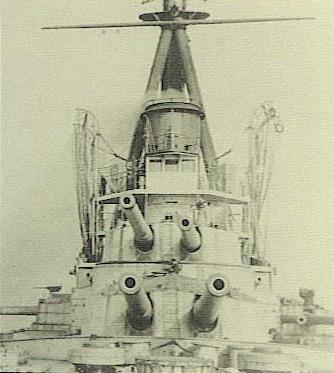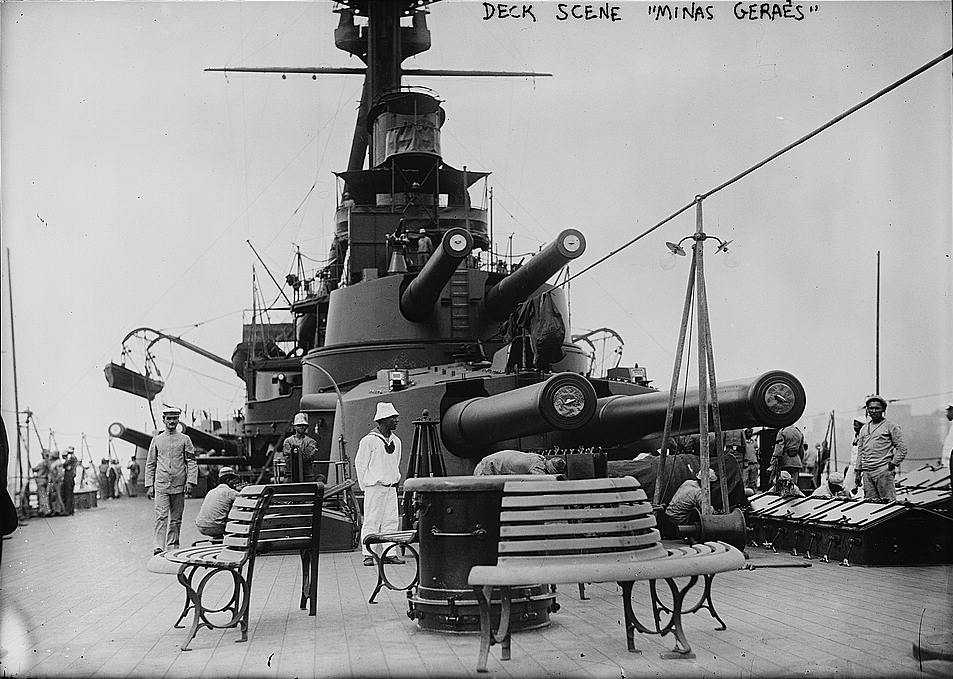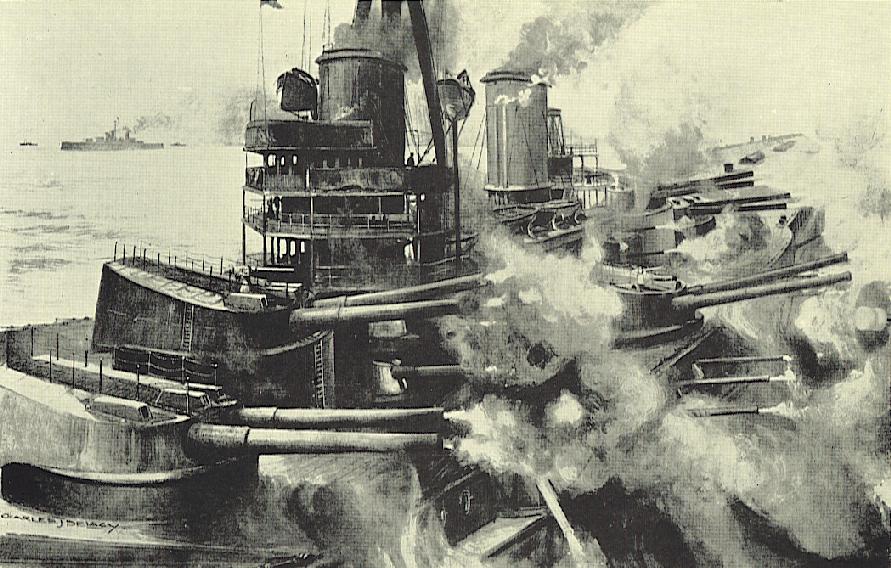|
These guns were of standard wire-wound construction except that the the outer of the two tubes under the wire was of three pieces and that the wire extended for only 75% of the barrel length. The breech mechanism was an Elswick design that had interrupted threads but was not a Welin (stepped) type. |

Minas Gerais at Rio de Janeiro in 1918
|

Forward turrets of Minas Gerais in 1909
|

Stern turrets on Minas Gerais
|

Artist's conception of Minas Gerais firing
a full broadside
|